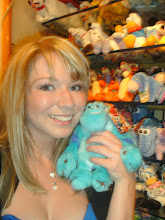This genre of film works on the emotions of fear, horror and terror from its audience. Their plots involve themes of death, the supernatural or mental illness and generally feature around a central villain. [wikipedia]
Elements of Aversion
Aversion is an essential element in a Horror because of the thrill and excitement we enjoy from living on the edge. The Horror genre reminds us that the world we live in isn’t always what it seems and is not always safe.
Elements of Absence
· The unknown: This is the central fear because it contains all the others, its based on the concept that anything could happen in reality there are guidelines and natural laws which allow us to predict events; within fiction authors often suspend those rules. Leaving our imaginations to run away with us and therefor us clinging to the edge of our seats.
· The unexpected: From the unknown comes the known and how we expect reality to function however when something happens which destroys our expectations, we are shocked and feel distress enabling us to feel uncomfortable.
· The unbelievable: When nobody listens or believes them we fear ourselves being put into a situation that sets us beyond belief, and we question their own sanity.
· The unseen: When we see blood and guts this instantly grabs our attention because in reality we never/rarely see them therefor that is why slasher scenes work so well because they are showing us something we rarely see however with every repeat the effectiveness decreases, with the unseen our curiosity holds us captive.
· The unconscious: Because we are interested in inner worlds, we then have lack of control of what happens equalling in us not being able to escape their effects. We are victims to subconscious urgings, we fear ourselves but also at the same time we are compelled to explore the unfamiliar regions.
· The unstoppable: We all understand entropy and believe that in nature things will come to an end humans and animals wear out eventually. Therefore when there is an endless pursuit this upsets our expectations that this isn't going to end.
Elements of Presence
· Helplessness: The worst feeling is the inability to control or affect your own fate. In horror, this is where the attraction is found when you are in complete lack of power.
· Urgency: When something can't be done but it must be or the price of failure is always dramatic e.g. death of a loved one or world destruction therefor the characters cannot just walk away we are then drawn into the urgency as well and this the central conflict of most horrors.
· Pressure: Works with suspense, the slow build of tension comes impacts the increasing need to do something, urgency is combined with pressure encouraging the characters greater accomplishments, whilst amplifying the audiences involvement. The pressure builds, peaks and then disperses.
· Intensity: When danger becomes the most intensive awareness, it enhances all positive and negative emotions and draws attention to every detail. Our sense pick up far more than usual; making the world more immediate and real.
· Rhythm: The following elements combined create a rise and fall of tension. The use of rhythm is vital to horror in that is allows the intensity to build to a higher peak. It sets the pattern of action which draws the audience in, alternatively some horrors succeed though a lack of pattern, again playing on our innate desire for the world to make sense.
· Release: We known that every story comes to a conclusion, in horror we may see the world return to "normal" or is change beyond recognition but the promise of resolution offers refuge from the stress of everyday life
[What Makes Horror Horrifying?by Elizabeth Barrette]
